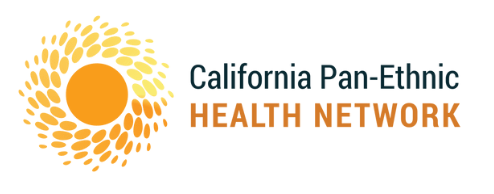Following our belief that health is about way more than just what happens in a doctor’s office, at CPEHN we have been working a lot in recent years to address the social and environmental determinants that impact our health. One of the main factors we have focused on is transportation. From pedestrian injuries to unequal access to public transit, transportation inequities often coincide with health disparities, particularly in low-income areas and communities of color. One of our successes has been the passage of our sponsored bill AB 441 in 2012, which included health and equity criteria in the state’s transportation planning guidance.
There are also a number of ongoing policy efforts to improve transportation and promote physical activity. Earlier today, the Safe Routes to School National Partnership hosted a webinar, Active Transportation and Equity: Key Challenges and Opportunities from the Field, to discuss how transportation policies that promote physical activity can also achieve equity. The webinar highlighted the organization’s recently released report, At the Intersection of Active Transportation and Equity: Joining Forces to Make Communities Healthier and Fairer, which looks at how active transportation advocacy can coincide with efforts to increase health and opportunity for low-income communities and communities of color.
The webinar featured presentations from the National League of Cities, the Asian & Pacific Islander American Health Forum, and the Los Angeles County Bicycle Coalition. Here are some highlights:
Sara Zimmerman from the Safe Routes to School National Partnership looked at some disparities in pedestrian injuries and deaths based on income and race and ethnicity.
Overview of transportation inequities by income and race ethnicity from @saferoutesnow pic.twitter.com/j68r7pNY21
— CPEHN (@CPEHN) July 21, 2015
Dramatic disparities in injuries by income @saferoutesnow pic.twitter.com/svoZvzwUFV
— CPEHN (@CPEHN) July 21, 2015
She discussed some of the social factors that prevent many people in communities of color from being able to safely use public spaces in their neighborhoods.
Racial profiling by law enforcement discourages comms of color from using public space @saferoutesnow pic.twitter.com/CLEnrMihyX
— CPEHN (@CPEHN) July 21, 2015
People of color more often subject to slurs, harassment, microaggressions when out walking/bicycling @saferoutesnow
— CPEHN (@CPEHN) July 21, 2015
She also talked about why it’s important to achieve equity in transportation funding in these underserved communities. Not only should they have equal funding, but they actually need more to make up for the decades of underinvestment.
Equity in transportation funding. Need to make up for decades of underfunding @saferoutesnow pic.twitter.com/lh2VOBLpCH
— CPEHN (@CPEHN) July 21, 2015
Alyia Smith-Parker from the National League of Cities talked about how cities are approaching health inequities by addressing their root causes.
The @leagueofcities is working to highlight root causes of health disparities "readiness matters" pic.twitter.com/feP6RALlCx
— CPEHN (@CPEHN) July 21, 2015
Pedro Arista from the Asian & Pacific Islander American Health Forum – one of CPEHN’s founding ethnic partner organizations – discussed the Strategies to Reach and Implement the Vision of Health Equity (STRIVE) program and their findings.
Learning about STRIVE program from @apiahf pic.twitter.com/RSqfXM5Ueg
— CPEHN (@CPEHN) July 21, 2015
Lessons learned from STRIVE program include importance of culturally tailored strategies @apiahf pic.twitter.com/GB4MLPIH6g
— CPEHN (@CPEHN) July 21, 2015
And finally, Tamika Butler from the Los Angeles County Bicycle Coalition talked about how to promote social justice and fight oppression through health and transportation advocacy.
Good definition of racism from @tamikabutler and @lacbc pic.twitter.com/6jxliFFASh
— CPEHN (@CPEHN) July 21, 2015
Need to really be careful about covert oppression @tamikabutler @lacbc pic.twitter.com/0RtB9lEBtl
— CPEHN (@CPEHN) July 21, 2015
The Safe Routes to School National Partnership is a great resource for active transportation and equity advocates. You can also check their California network for more information on advocacy efforts here in California.

